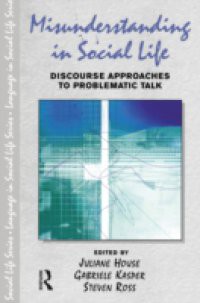Misunderstanding is a pervasive phenomenon in social life, sometimes with serious consequences for people's life chances. Misunderstandings are especially hazardous in high-stakes events such as job interviews or in the legal system. In unequal power encounters, unsuccessful communication is regularly attributed to the less powerful participant, especially when those participants are members of an ethnic minority group. But even when communicative events are not prestructured by participants' differential positions in social hierarchies, misunderstandings occur at different levels of interactional and social engagement. Misunderstanding in Social Life examines such problematic talk in ordinary conversation and different institutional settings, including socializing events and story tellings, education and assessment activities, and interviews in TV news broadcasts, employment agencies, legal settings, and language testing. The analyzed interactions are located in a variety of sociocultural environments and conducted in a range of languages, including English, French, German, Hebrew, Japanese, such language varieties as Aboriginal Australian English and Maori New Zealand English, and nonnative varieties.The original studies included in this volume adopt a variety of theoretical perspectives, including discourse-pragmatic approaches, conversation analysis, interactional sociolinguistics, social constructionism, tropological and narrative analysis. They represent multiple views of misunderstanding as a multilayered discourse event.

